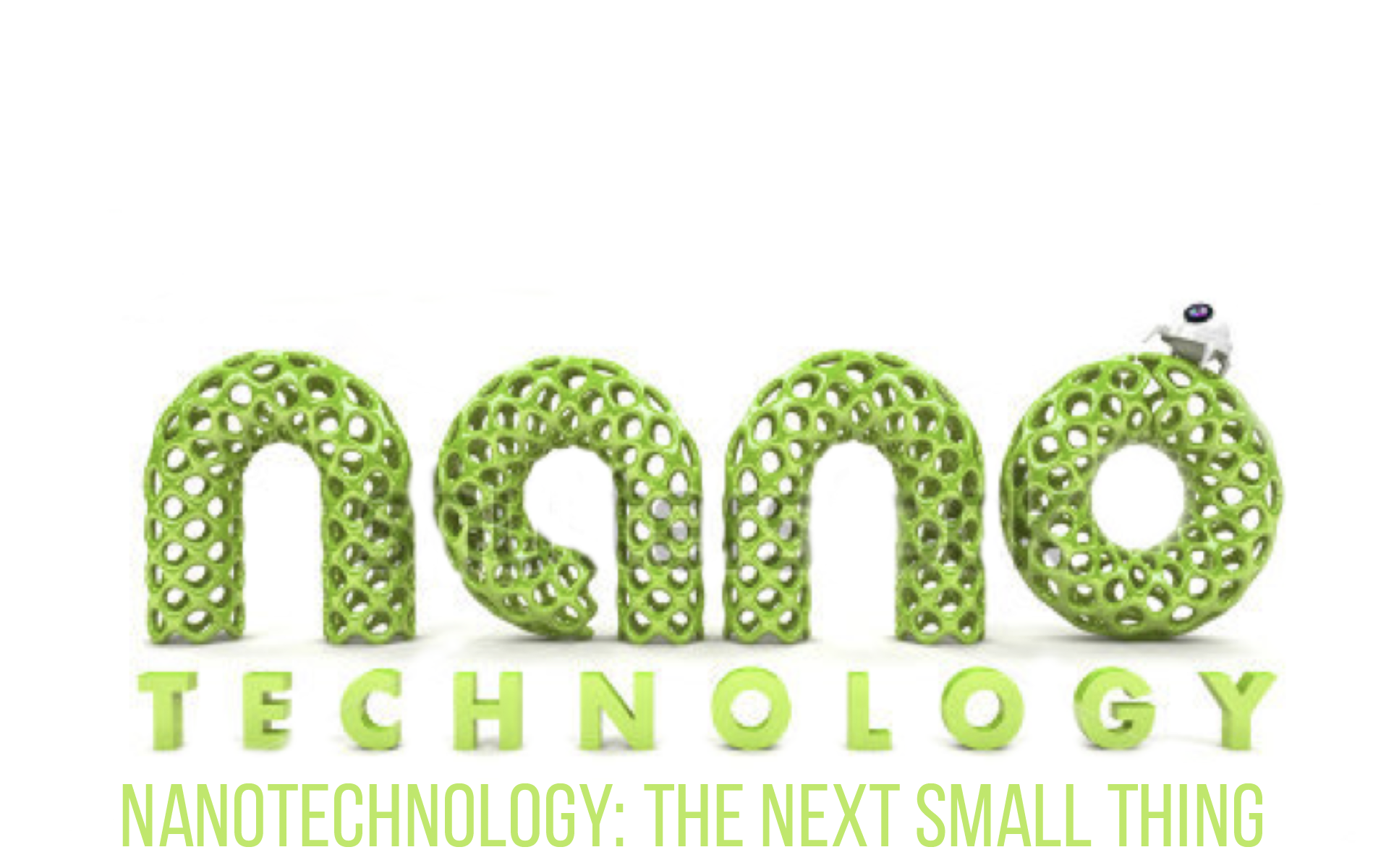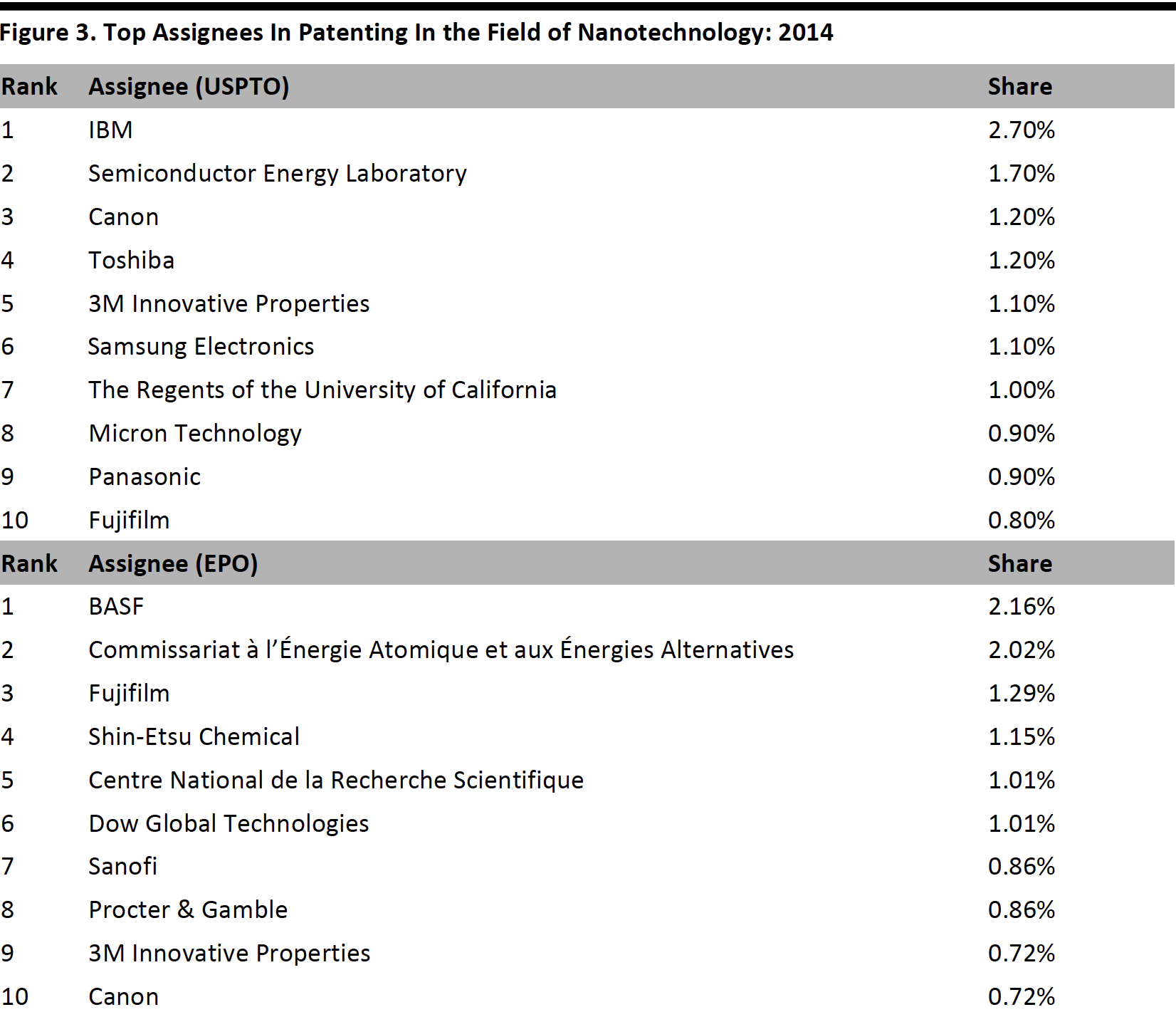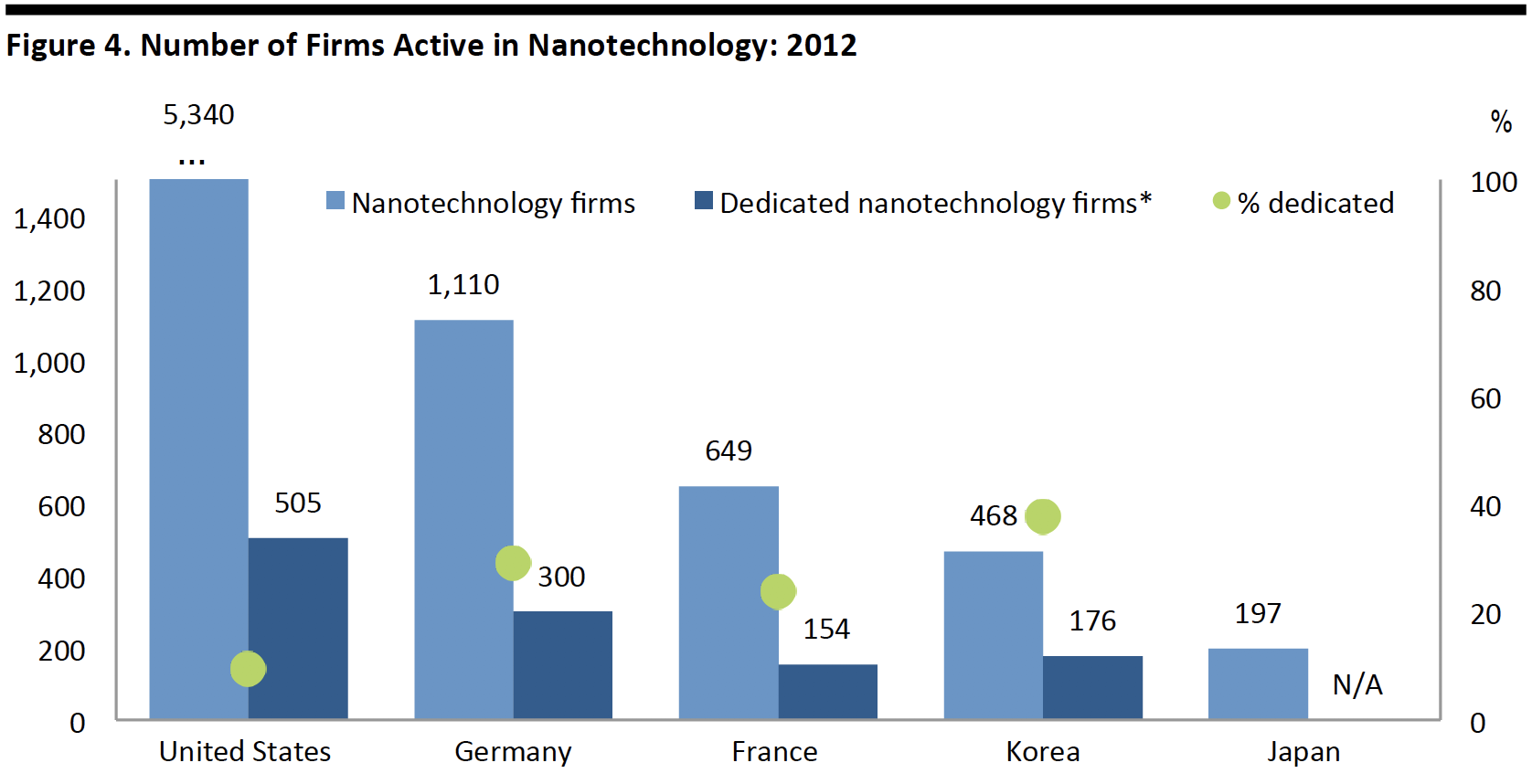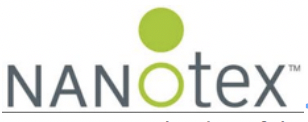
albert Chan
Executive Summary
The world is indeed getting smaller. Nanotech was a buzzword at the turn of the millennium, however nanomaterials and nanoparticles are now in the everyday products we put on our faces and bodies, and they’re also hiding in our automobiles and smartphones. Nanotechnology has been silently transforming innovation in numerous sectors, including textiles, personal care, energy, healthcare and electronics, and it’s increasingly attracting worldwide attention thanks to its wide range of end uses.
Nanomaterials come in all shapes and sizes: particles, tubes, spheres and quantum dots. Despite their small size, these materials have large surface areas, and they can have useful electronic, chemical, optical, magnetic and thermal properties.
These nanomaterials are also revolutionizing the apparel industry. They make textiles multifunctional and give them new, previously impossible functions such as repelling water, stains and odors. Silver nanoparticles have been coated onto textiles in order to give them antibacterial properties.
There are similarly exciting new nanomaterial applications for personal care and cosmetic products, such as antiaging creams, eye makeup, lipsticks, foundation makeup and body washes. For example, nanoscale titanium dioxide and zinc dioxide can filter out UV radiation, which makes them ideal for use in sunscreens and cosmetics. They’re also transparent, which enables them to be used in “clear” products. Some nanomaterials can be used in cosmetics as delivery vehicles because they help other compounds penetrate the skin, and they can be engineered to provide color, transparency, solubility and other properties. Moreover, nanoemulsions can be used to store active ingredients, deliver them to deeper skin levels and hair shafts, and enhance hydration.
Although not normally considered nanotech, the global semiconductor industry has been working with features measured in nanometers since 1989. State-of-the-art Intel processors are built from lines just 14 nanometers across (that’s 14 billionths of a meter, by the way). These small features are also used to construct tiny machines called microelectromechanical systems (MEMS), which are used in airbag sensors and inkjet printers; there are five or six of MEMS sensors in smartphones currently on the market. Moore’s Law dictates that features in semiconductors will continue to get smaller, which means they’ll also get cheaper over time, and these economics are pushing high-tech machines and devices into the price range of consumer products. Sensors made with MEMS are cheap enough now that a single item of clothing can contain several of them.
Estimates of the size of the nanotech product market vary, but National Science Foundation identified more than US$1 trillion in global revenue from nanoenabled products in 2014 last year. The combined markets for chips and processing equipment top $80 billion.
Although nanotechnology has been discussed for a couple of decades and nanotech-enabled products are shipping today, nanotechnology can hardly be called mature, as evidenced by the recent explosion in applications and aggressive market forecasts.
What Is Nanotechnology?
The US National Nanotechnology Initiative defines nanotechnology as science, engineering and technology conducted at the nanoscale, which is about 1 to 100 nanometers (one nanometer is one-billionth of a meter).
Although there is no consensus on the definition of nanotechnology, its key characteristic is its use in achieving a unique property or function in a given material at the nanoscale. From a chemical perspective, nanomaterials have the same composition as the corresponding material in a larger form. Yet the properties of materials on a nanoscale can differ significantly, due to two main reasons:
- Reduced size: At a nanoscale, the properties of materials become size-dependent. Reducing the size of materials gives rise to significant changes in their electronic, chemical, optical, magnetic and thermal properties.
- High surface-to-volume ratio: Nanomaterials have much greater surface area per unit of volume than larger-scale materials do. This leads them to be more chemically reactive and affects their strength and electrical properties.
The most common nanotechnologies are Buckyballs, carbon nanotubes, graphene, nanoparticles and quantum dots.
- Buckyballs: Buckyballs, also known as fullerenes (named after American author and inventor Buckminster Fuller), are closed, hollow cages consisting of carbon atoms interconnected in pentagonal and hexagonal rings. Buckyballs are extremely strong molecules capable of withstanding strong pressures. They can be applied in nonlinear optics, surface coatings and fuel cells.
- Carbon Nanotubes (CNTs): CNTs are tube-shaped materials made of carbon that have a diameter measuring on the nanometer scale. CNTs are 100 times stronger than steel, but much lighter in weight. CNTs have potential uses in reinforced composites, textiles, sensors, solar cells, superconductors and displays.
- Graphene: Graphene is an atomic-scale honeycomb lattice made of carbon atoms. It has a unique combination of properties, including mechanical flexibility, high electrical conductivity and chemical stability which is ideal for next-generation electronics. Applications of graphene range from electronics to optics to sensors to biodevices.
- Nanoparticles: Nanoparticles are particles between 1 and 100 nanometers in size. Their properties differ from those of the same substance in bulk form. There are a myriad of nanoparticle applications, and they’re now widely being used in textiles, coatings, personal care products and medicines. Dendrimers are branched molecules that can be used to synthesize nanoparticles.
- Quantum dots: Quantum dots are tiny particles, or nanocrystals, of a semiconducting material that are small enough to exhibit special quantum mechanical properties. At present, quantum dots have many applications in computing, photovoltaic devices and biology.
NANOTECH MARKETS
[caption id="attachment_114115" align="aligncenter" width="700"] * The estimate excludes semiconductors and high-volume additives.[/caption]
* The estimate excludes semiconductors and high-volume additives.[/caption]
The National Science Foundation identified more than US$1 trillion in global revenue from nanoenabled products in 2014. It estimated that worldwide revenue from nanoenabled products grew from US$339 billion in 2010 to US$731 billion in 2012.
BCC Research, an advanced material and nanotechnology market research firm, projected the global market for nanotechnology products to increase to US$64.2 billion by 2019, at a CAGR of 19.8% from 2014 to 2019. The estimate excludes semiconductors and high-volume additives. It covers nanomaterials, nanotools and nanodevices (nanosensors and nanoelectronics).
Nanomaterials, particularly nanoparticles and nanoscale thin films, dominated the nanotechnology market in 2013, accounting for 78.8% of the market. This segment is predicted to grow at a CAGR of 20.7% to US$52.7 billion by 2019.
Market research firm Lux Research developed a framework for a nanotechnology value chain that goes from nanomaterials (nanoscale structures in unprocessed form) to nanointermediates (intermediate products with nanoscale features) to nanoenabled products.
[caption id="attachment_114116" align="aligncenter" width="700"] Source: Lux Research[/caption]
Source: Lux Research[/caption]
MAJOR PLAYERS
IBM is the leader in investing in and developing nanotechnology. According to StatNano, IBM was granted the highest number of nanotechnology-related patents by the US Patent and Trademark Office (USPTO) in 2014, and it also ranked first, with a 2.7% share, among assignees of nanotechnology-related granted patents. In the European Patent Office (EPO), BASF, the world’s largest chemical manufacturer, was the largest assignee of nanotechnology-related patents in 2014.
[caption id="attachment_114117" align="aligncenter" width="700"] Source: StatNano[/caption]
[caption id="attachment_114118" align="aligncenter" width="700"]
Source: StatNano[/caption]
[caption id="attachment_114118" align="aligncenter" width="700"] *Dedicated nanotechnology R&D firms devoting at least 75% of their total R&D spending to nanotechnology. These firms are captured by R&D surveys.
*Dedicated nanotechnology R&D firms devoting at least 75% of their total R&D spending to nanotechnology. These firms are captured by R&D surveys.Source: OECD[/caption]
APPLICATIONS
Consumer Applications
Nanotechnology is a major part of our daily life, and there are already many consumer products on the market that use it. The Project on Emerging Nanotechnologies at the Woodrow Wilson International Center for Scholars maintains a database that lists nanotechnology consumer products inventory. In October 2013, the researchers at the center estimated that over 1,628 nanoenabled consumer products or product lines were publicly available. The largest main category in the list was health and fitness, with a total of 788 products listed. Within that category, the personal care, clothing and cosmetics subcategories contained 292, 187 and 154 products, respectively.
[caption id="attachment_114120" align="aligncenter" width="700"] Source: Journal of Engineering and Technology Research[/caption]
Source: Journal of Engineering and Technology Research[/caption]
Apparel/Textile Applications
The use of nanotechnology in textiles is flourishing, as it enhances or offers previously unknown functions of textile materials and products. The textile industry has been widely using nanotechnology in the creation of smart fabrics and clothing in recent years. The use of nanoparticles allows textiles to become multifunctional and manufacturers can now produce fabrics with antibacterial, waterproof, stain-repellent and odor-resistant properties. For instance, silver nanoparticles have been coated onto textile fabrics in order to give them antibacterial properties.
To date, textiles featuring nanotechnology are largely made from standard fabrics upon which a nanocoating has been applied. Recently, the Australian clothing and technology company Threadsmiths created a revolutionary T-shirt, The Cavalier, which is water- and stain-repellent. This plain, white T-shirt is made from 100% cotton and features a patented “hydrophobic” nanotechnology application woven into the fabric. It can repel most liquids and stains by minimizing their surface area, causing them to roll off the fabric.
The application of nanotechnology in smart fabrics offers considerable potential for the development of new textile materials. The Japanese firm Kuraray has already developed a way to harness attributes of polymers known as liquid-crystalline polymers. This results in extraordinarily strong fibers that can hold the weight of four SUVs.
Smart textiles are one of the major future areas for the application of nanotechnology, and scientists are working on embedding nanoelectronic devices into them. Some garments can now provide health monitoring, body temperature monitoring, and power generation and storage to enable communication with the outside world. [caption id="attachment_114120" align="aligncenter" width="1668"] Source: Journal of Engineering and Technology Research[/caption]
Source: Journal of Engineering and Technology Research[/caption]
Personal Care and Cosmetic Products
Nanomaterials are used in most types of personal care and cosmetic products, including antiaging creams, eye makeup, lipsticks, foundation makeup and body washes. Since L’Oréal launched its first nanotech-enhanced product in 1998, other companies, including Johnson & Johnson, Procter & Gamble, Estée Lauder and Avon, have embraced nanotechnology to improve the performance of their beauty care and personal care products.
- Sunscreen: Nanoscale titanium dioxide and zinc dioxide are the main compounds for filtering UV radiation. They also become transparent when they are nanosized.
- Delivery vehicles: Nanomaterials are used in cosmetic products as delivery vehicles because they help penetrate the skin. They can also enhance nanoparticle properties such as color, transparency and solubility.
- Nanoemulsions: Nanoemulsions are used to store active ingredients, which are carried to deeper skin levels and hair shafts and enhance hydration performance.
Haircare products are another example of a personal care category that is benefiting from groundbreaking innovation in nanotechnology. Luxury brand Pureology pioneered employing nanotechnology in haircare products. It has enjoyed huge success in recent years after incorporating nanomaterials into its shampoos and conditioners. The company was acquired by L’Oréal in 2007.
Sporting Goods
Nanomaterials are also being used in a wide range of sporting goods. Sporting goods employing nanotechnology are superior in terms of strength, stiffness and durability compared to conventional sporting products.
- CNTs are widely used to reinforce a variety of sporting goods, including tennis rackets and baseball bats. They make these items much stronger, but with less weight, while still retaining their stiffness.
- Nanomaterial coatings are applied to improve the performance of products such as ski wax and tennis balls.
- The incorporation of nanomaterials lightens golf clubs while increasing their power and accuracy during play.
- Swimsuits made with nanotechnology can repel water and increase buoyancy.
OTHER APPLICATIONS
Semiconductors, Semiconductor Equipment and Micromachines
The semiconductor industry has technically been a user of nanotechnology since 1989, when the industry was first able to produce line widths below one micron (1μm, or one millionth of a meter) in fabricating integrated circuits on silicon wafers. Line widths have generally decreased according to Moore’s Law, and chips with 14-nanometer features are shipping today. With the evolution of nanotechnology, semiconductors are increasingly being used in industries such as solar power, healthcare and aviation. The graph below shows the narrowing of line widths in semiconductors, following Moore’s Law.
[caption id="attachment_114121" align="aligncenter" width="700"] Source: Intel[/caption]
Source: Intel[/caption]
The markets for semiconductors and semiconductor-processing equipment are technically part of the nanotech universe and each category represents billions of dollars per year in sales. The global market for semiconductor equipment is forecast to be approximately US$43.8 billion this year, and it should remain essentially flat in 2016, according to global semiconductor industry association SEMI.
SEMI further estimates that the market for semiconductor-processing equipment will be US$38.7 billion this year, increasing by 5%, to US$40.7 billion, next year. Equipment for manufacturing semiconductors includes stepper machines to lithography tools to light sources (lasers)
As things get smaller, they become more and more difficult to see. Fortunately, there are a number of companies that make instruments for viewing and measuring objects in the nanosphere, such as electron microscopes, which have long been used in other industries, such as materials science, life sciences, natural resources and industrial manufacturing. FEI, Hitachi High Technologies, JEOL, Carl Zeiss and Tescan make instruments that help us see very small objects.
MEMS
MEMs are just tiny machines that are actuated with electricity. They’re made from silicon wafers with older-generation semiconductor-processing equipment.
MEMS generally fall within two categories:
- Sensors that measure characteristics of the outside world.
- Actuators that manipulate characteristics in the outside world.
Applications for MEMS include:
- Inkjet printers.
- Accelerometers in automobile airbags; radio-controlled helicopters, planes and drones; video-game controllers, cellphones, digital cameras and hard drives.
- Gyroscopes in automobiles.
- Microphones in mobile phones and portable devices.
- Displays, such as digital-light-processor projection TVs and projectors.
- Optical switching.
- Sensors for chemical analysis and for embedment in medical devices.
- Interferometric displays in consumer electronic devices.
- Fluid acceleration such as microcooling.
- Energy harvesting.
- Ultrasound transducers.
MEMS are instrumental in today’s smartphones, in wearable technology and in the Internet of Things. For example, the iPhone 6 contains several MEMS, including a three-axis accelerometer (which measures acceleration) and a six-axis gyroscope/accelerometer (which measures movement and acceleration). And the number of MEMS used in smartphones is likely to increase further in future models.
These machines are important because their cost continues to fall in accordance with Moore’s Law, making them affordable enough to be used in consumer electronics products.
Substantial Venture Capital Investment
In recent years, the commercialization and market penetration of nanoenabled materials have been accelerating. The nanotechnology industry has attracted a consistent flow of investment, from both governments across the world and private investors. As nanotech has the potential to disrupt and expand many industries, investment in it is expected to continue to grow in coming years, which is a major driver of the emergence of more and more nanotech start-ups. There are numerous well-known venture capital firms specializing in nanotechnology, including Nanostart in Europe and Harris & Harris Group in the US.
[caption id="attachment_114122" align="aligncenter" width="700"] Source: CrunchBase[/caption]
Source: CrunchBase[/caption]
Selected Emerging Nanotechnology Company Profiles
There have been many emerging companies with that have developed and groundbreaking nanotechnology developed in recent years. Below we highlight three of them:
![]() P2i is the world leader in liquid repellent nano-coating technology. It works with manufacturers to deliver liquid-repellent nanocoating protection for products across five key market sectors: electronics, lifestyle, life sciences, filtration and energy, and government/military.
P2i is the world leader in liquid repellent nano-coating technology. It works with manufacturers to deliver liquid-repellent nanocoating protection for products across five key market sectors: electronics, lifestyle, life sciences, filtration and energy, and government/military.
Applications: The company developed ion-mask brand technology which is used in lifestyle products such as footwear, outdoor clothing and accessories (gloves and headwear). Clients of ion-mask products include several international footwear companies like Timberland, Nike, Hi-Tec and K-Swiss. Recently, Huawei introduced P8 smartphones that incorporate P2i’s liquid-repellent nanocoating technology.
 Nanotex is a leading fabric innovation company providing nanotechnology-based textile enhancements to the apparel, home and commercial/residential interiors markets. In 2013, the company was acquired by performance textile supplier Crypton Fabrics.
Nanotex is a leading fabric innovation company providing nanotechnology-based textile enhancements to the apparel, home and commercial/residential interiors markets. In 2013, the company was acquired by performance textile supplier Crypton Fabrics.
Applications: The company’s product address five key textile technology segments, including repellent/stain resistance, moisture management, odor control, static elimination and wrinkle free. There are more than 80 textile mills worldwide that use Nanotex treatments in products sold by more than 100 leading brands worldwide.
![]() Cima NanoTech is a smart nanomaterials company that makes high-performance, next-generation transparent conductors. Last year, the company raised US$10 million from a venture capital firm.
Cima NanoTech is a smart nanomaterials company that makes high-performance, next-generation transparent conductors. Last year, the company raised US$10 million from a venture capital firm.
Applications: The Company’s technology enables the manufacture of transparent conductors with excellent electrical conductivity, high transparency and flexibility. Its proprietary SANTE nanoparticle technology is an innovative conductive coating that can be used for flat-panel displays, touchscreens and solar cells.
Conclusion
Although nanotech has enjoyed a good deal of buzz for more than a decade and is currently used in a number of products on the market, it’s by no means mature. Nanotech-based products are a $1 trillion-plus market. The semiconductor industry has been dealing with nanoscale technologies for more than a decade, and today, the number of consumer products available that are based on nanoparticles of various types is expanding. These technologies are driving innovation in textiles, beauty products and sunscreens, and even in sporting goods and healthcare. Sometimes, it’s the small things that really matter, and nanotechnology centers on very small things that have huge potential to improve our lives.